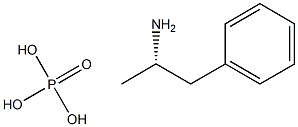General Description
Dextroamphetamine, (+)-(S)-methylphenethylamine, formssalts with sulfuric acid (Dexedrine) and with phosphoric acids.The phosphate is the more water-soluble salt and is preferredif parenteral administration is required. The dextrorotatoryisomer has the (S) configuration and fewer cardiovascular effectsthan the levorotatory (R)-isomer. Additionally, it may beup to 10 times as potent as the (R)-isomer as an alerting agentand about twice as potent a psychotomimetic agent. Althoughit is a more potent psychotomimetic agent than the (R)-isomer,it has a better ratio of alerting to psychotomimetic effects.
The major mode of action of dextroamphetamine is releaseof NE from the mobile pool of the nerve terminal. Othermechanisms, such as inhibition of uptake, may make a smallcontribution to the overall effects. The alerting actions relateto increased NE available to interact with postsynaptic receptors(α1). Central β-receptor activation has classically beenconsidered the basis for most of the anorexiant effect.
Clinical Use
Dextroamphetamine phosphate is a strongly basic amine, with valuesfrom 9.77 to 9.94 reported. Absorption from the gastrointestinaltract occurs as the lipid-soluble amine. The drug is not extensively protein bound. Varying amounts ofthe drug are excreted intact under ordinary conditions.

